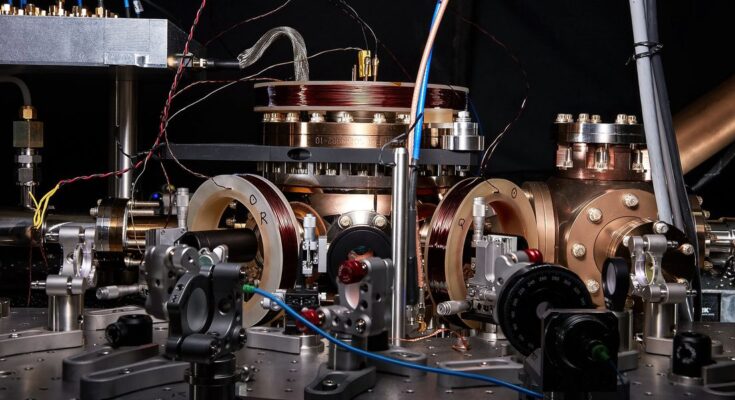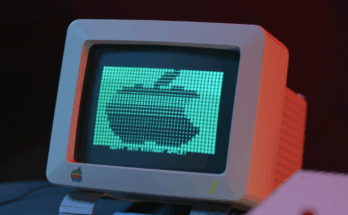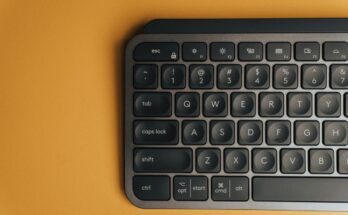Quantum computers theoretically could rapidly find answers to problems that regular computers would take eons to solve, but they have to first overcome their error-prone nature. Now quantum computing firm Quantinuum says its machines can, for the first time, run all the operations needed to answer otherwise intractable questions in an error-compensating way.
Quantum computers perform calculations using components known as qubits, which are highly unstable in nature. Present-day, state-of-the-art quantum computers typically suffer roughly one error every 1,000 operations. In contrast, many practical applications for quantum computing demand error rates lower by a billionfold or more.
To move past the current era of noisy intermediate-scale quantum computing, scientists aim to compensate for high error rates by spreading quantum information across many redundant qubits. These quantum error correction strategies would help quantum computers detect and correct mistakes. In these schemes, a cluster of “physical” qubits altogether behave as one low-error “logical” qubit, serving as the foundation of a fault-tolerant quantum computer.
Once a quantum error correction code is running, a quantum computer can then link qubits together to carry out elementary operations known as quantum gates. These come in two flavors—so-called Clifford gates, which classical computers can simulate, and non-Clifford gates, which they cannot.
A so-called universal quantum computer that can run both kinds of gates is theoretically capable of performing computations far beyond the capabilities of conventional supercomputers. However, although some groups have performed quantum gates using quantum error correction, Quantinuum notes those displayed error rates near 10 percent, too high for practical use.
In addition, non-Clifford gates require qubits with special properties known as magic states. Previous research found ways to prepare magic states from noisy qubits, but the number of qubits needed to create usable magic states “was thought to be really enormous,” says Shival Dasu, an advanced physicist at Quantinuum.
Scaling Up Quantum Computers Is Becoming More Feasible
Recent work revealed “overheads for some quantum error correction codes are coming down faster than others,” Dasu says. “We managed to design a really efficient magic-state production protocol.”
 Quantinuum’s H1 trap holds 20 ytterbium ions, which act as error-prone physical qubits. The team used eight to create a so-called magic state, which they used to perform quantum operations that were less error-prone than their physical constituents. Quantinuum
Quantinuum’s H1 trap holds 20 ytterbium ions, which act as error-prone physical qubits. The team used eight to create a so-called magic state, which they used to perform quantum operations that were less error-prone than their physical constituents. Quantinuum
In a new study, Dasu and his colleagues experimented with Quantinuum’s H1-1 processor. The device uses 20 qubits made from electrically trapped ytterbium ions.
The researchers showed they could not only prepare two magic states from just eight physical qubits, but also perform a two-qubit non-Clifford gate with a logical error rate of about one mistake per 5,000 operations, an error rate approaching one-tenth that of its physical one. “This is the first time a quantum circuit was run using a universal quantum gate set and showed a higher accuracy with quantum error correction than without it,” Dasu says.
The scientists prepared these magic states with an error rate of just seven mistakes per 100,000 operations, about 10 times better than any previously reported work. Their simulations also suggested they could reach just six errors per 10 billion operations on a larger-scale version of their quantum computer, and five per 100 trillion operations as they continue to improve their hardware.
“Our simulations suggest we can use roughly 40 physical qubits to create one very-high-fidelity magic-state qubit,” Dasu says. “That overhead looks pretty reasonable.”
In comparison, “when it comes to the previous state-of-the-art work I’m aware of, magic states would take about 10 times more qubits,” says David Hayes, director of computational design and theory at Quantinuum.
Code Switching Brings Advantages
In another study, Quantinuum researchers and their colleagues switched a quantum processor back and forth from one quantum error correction code to another. “One reason to do this is because, for instance, it’s harder to do some quantum gates in one code than in others,” Hayes says. “The idea with code switching is to jump back and forth between codes to perform gates that are easy for them.”
Such code switching is not practical for all codes and quantum-computing architectures. “What’s special about our architecture is there is this all-to-all connectivity between our qubits,” Hayes says. “So you can imagine two codes, one requiring qubits living in a 2D geometry, the other in a 3D space, and if your qubits are all laid out locked in a plane, switching between these codes is impossible. With our architecture, it’s possible.”
In experiments with Quantinuum’s H2-1 processor, which uses 56 qubits made from electrically trapped ytterbium ions, the researchers showed they could switch between one code that was more efficient at producing magic states and another that was better at performing quantum gates.
“We’re finding more and more evidence that all-to-all connectivity can bring down the resource requirements for quantum computing,” Hayes says.
Quantinuum says these new findings mark a key advance in the company’s goal of a scalable universal fault-tolerant quantum computer by 2029. “Once you get quantum error correction going, you can push connectivity between qubits pretty high,” Hayes says. “How many ions can ultimately be connected together on a chip? Maybe thousands of qubits, maybe hundreds of thousands. We’re talking with foundries right now for bigger and bigger chips to house more and more qubits.”
Quantinuum also needs photonic integrated chips “with lasers to manipulate the qubits,” Hayes says. “That technology is less mature, but we’re making agreements with the University of New Mexico and Los Alamos and Sandia National Labs to help advance photonics as quickly as possible.”
The scientists detailed their findings online on 26 June in two studies on the ArXiv preprint server.
From Your Site Articles
Related Articles Around the Web



